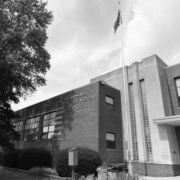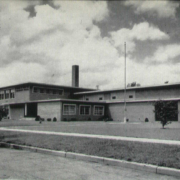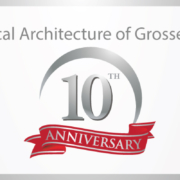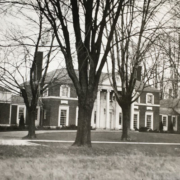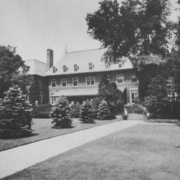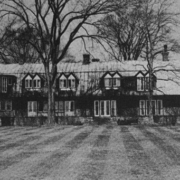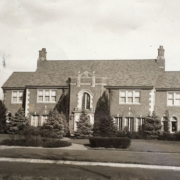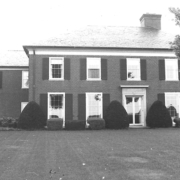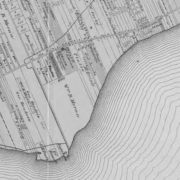Historical Architecture of Grosse Pointe – How Schools Got Their Names, Part 1
Last week we began our three-part series on the history of some of the schools in Grosse Pointe with a presentation about Kerby Elementary School. Kerby is one of the oldest schools in the community, the origins of the school date to around 1886, when it was a one-room wooden schoolhouse. Over the years Kerby has changed significantly, it is now located in its third building, completed in 1948 – 1950.
This week we continue the series as we explore how some of the schools got their names. Many of the schools were named after a prominent member of Grosse Pointe, or the State, who had made an important contribution to the community, mainly in the field of education.
Robert Trombley (closed in 2020)
The school was named after Robert Trombly, a long-time civic leader in Grosse Pointe Park. Mr. Trombley served on the school board for 30 years (before consolidation in December 1921) and was also a landscape architect.
The original Robert Trombley School (District #1) built in 1903, was situated on the corner of Jefferson and Beaconsfield. By the mid 1920’s it was acknowledged a larger building was required for the district. Completed in 1927, the new school was an impressive two-story Tudor-Gothic style structure. It was designed by the nationally acclaimed Detroit based firm, Smith, Hinchman, & Grylls. Image courtesy of: Wayne State University’s Motor City Collection (1925).
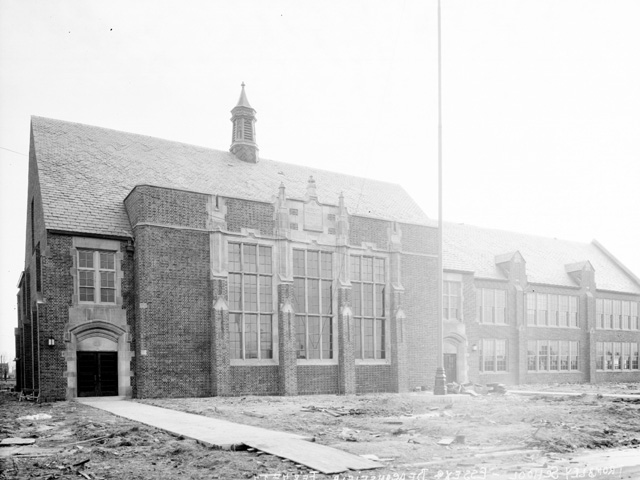
Defer
The school was named in honor of George Defer who served on the board of education and was president of the Village of Grosse Pointe. When he died on May 2, 1927, he was a senator for the state of Michigan.
Defer Elementary School is currently one of the oldest buildings still in use in the Grosse Pointe Public School System. Completed in the Tudor Revival style it was designed by renowned Detroit architect George J. Haas. Construction began in 1924, and it opened in February 1925. It appears it was the first elementary school to be built after the five school districts were consolidated (in December 1921) into Rural Agricultural District No. 1. Image courtesy of © Indiana Limestone Company. Courtesy, Indiana Geological and Water Survey, Indiana University, Bloomington, Indiana.
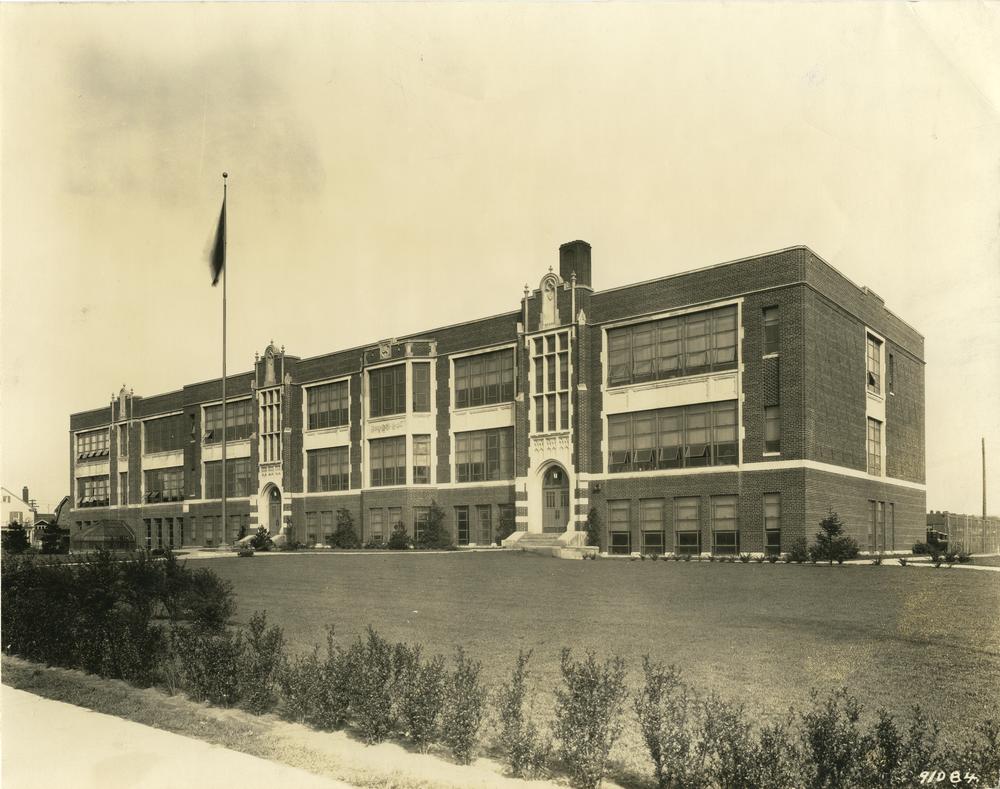
Stevens T. Mason
It is reported the Board of Education decided to name the school in honor of the first Governor of Michigan, Stevens T. Mason. Governor Mason, who passed in New York City in 1843, was known as the “Boy Governor”, after he was elected aged just 25. It was reported “he was one of the most interesting historical figures in Michigan. Under his administration the public school system of the State was organized, and the first superintendent of public instruction was appointed”. Source: Grosse Pointe Civic News (September 1928).
The school was completed in the spring of 1929, having been designed by renowned school architect George J. Haas. It was the third building Mr. Haas had created for the Grosse Pointe Public School District (the others were Defer, and Grosse Pointe South). The architectural style of the two-story building was described at the time as Georgian Colonial. No expense was spared in creating this fine building. Having cost $339,469 (around $5.8m today), which included purchasing the five-acre site, the school was described as “one of the largest rural schools in the country.” Source: Detroit Free Press (July 1928). Image is courtesy of Katie Doelle.
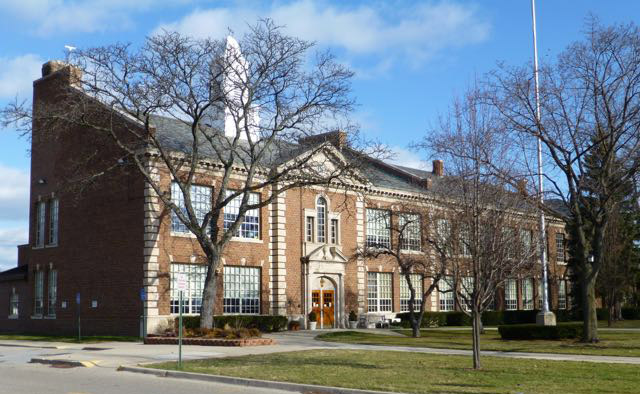
Pere Gabriel Richard
Père Gabriel Richard Elementary School was named in honor of Father Gabriel Richard (born in France, 1764), a pioneer Roman Catholic missionary and educator who widely promoted education in the early nineteenth century. It is reported “his missionary work brought him to Detroit in the early 1800s where he established the first printing press and the first newspaper in 1809.” (Source: GP News June 1990). It is understood “Father Richard established the first school for settlers in Grosse Pointe near Waterworks Park when the area was part of Grosse Pointe Township. He was also a founding father of the University of Michigan.” Source: National Register of Historic Places (NRHP) Registration Form (1994).
Prominent local architect Robert O. Derrick designed the school in a French Renaissance Revival architectural style, in honor of Father Gabriel Richard and the community’s French heritage. Completed in 1930, it has been suggested it may be the only school in Michigan whose design is in the French Renaissance style. It is one of three schools Robert O. Derrick designed for the Grosse Pointe Public School system. Image courtesy of: Wikipedia.
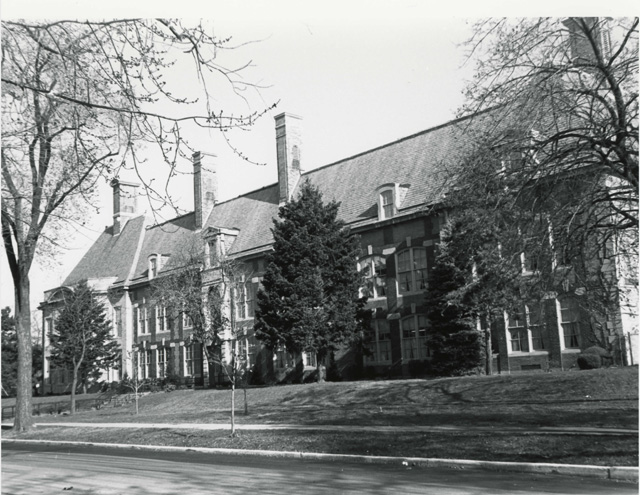
Kerby Elementary
Kerby is one of the oldest schools in Grosse Pointe. It was named after John R. Kerby, an original member of the Grosse Pointe Board of Education from 1922-1926 (he was president for the last year of his service). Mr. Kerby was an ancestor of John Kerby (born 1754, in Albany, New York), who allegedly settled in Grosse Pointe around 1796, following the purchase of 120 acres of land from his father-in-law James Donaldson.
The origins of the school date to around 1886, when it was a one-room wooden schoolhouse. A much larger school (located at 104 Kerby) opened in 1905, designed by the renowned firm of William B. Stratton and Frank C. Baldwin. Over the years Kerby has changed significantly, it is now located in its third building (located at 285 Kerby), which was completed in 1948 – 1950. The new modern structure was designed by the firm of Robert O. Derrick and his then partner Branson Van Leer Gamber. Image courtesy of: Grosse Pointe Public School System.
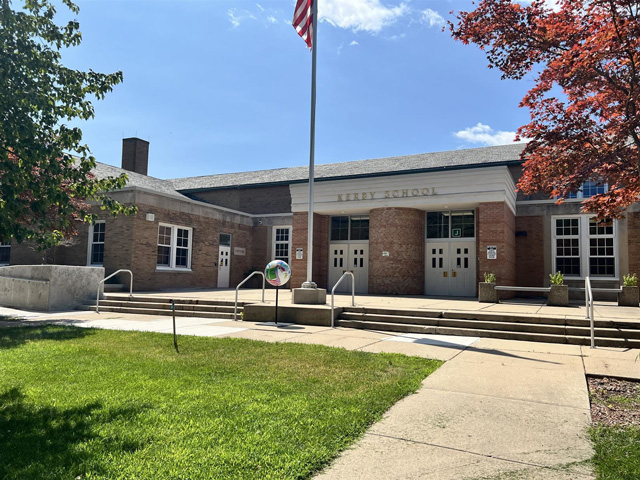
Charles A. Poupard (closed in 2020)
Charles Poupard was the treasurer for the Grosse Pointe Board of Education from 1922 to 1948. He reportedly never missed a meeting and was known for his kindness. He also served as a clerk for the Village of Grosse Pointe Park.
Charles was an ancestor of the Poupard Family who were once one of the most prosperous families in Grosse Pointe. Simon and Genevieve Poupard (Charles’s parents) owned one of the original spacious ribbon farms that once lined the shores of Lake St. Clair in the mid-1800’s.
The Charles A. Poupard Elementary School opened in 1951. This modern style building, located in Harper Woods, was designed by Earl G. Meyer who was known for his work on designing school buildings throughout Michigan. It appears he designed four schools for the Grosse Pointe Public School System during the 1950’s (Poupard, Ferry, Barnes, and Brownell). The 63,000 sq ft structure is located on 6.5 acres. In 2023, the GPPSS agreed to sell the school to a development company who planned to build around 71 housing units on the property. At the time of writing the sale is still being finalized. Image courtesy of: The Detroit News.
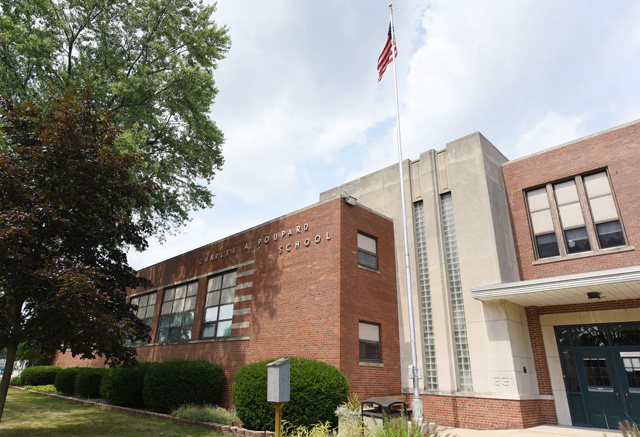
Barnes Elementary School (closed 1984)
John R Barnes Elementary School was named after Superintendent Barnes who served the Grosse Pointe Public School System from 1947 to 1950. He had been the supervisor of instruction.
The school was built in 1954 and opened in 1956. This modern style building was designed by Earl G. Meyer. It was reported the school reached its peak enrollment of 488 students in 1970. By 1983, it had the lowest enrollment of any building in the district with only 191 students. In 1983, the Board of Education voted to close the school. The building is now the location of the Barnes Early Childhood Center. Images courtesy of: usmodernist.org (Michigan Society of Architects, 1957).

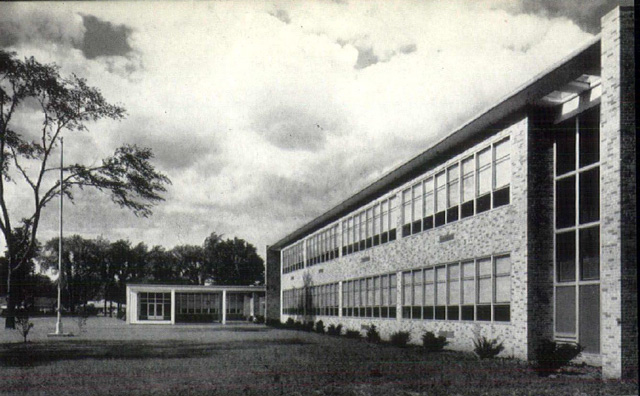
With so many interesting historical figures and schools to cover, we will be continuing the story of How Schools Got Their Names, with part 2 next week.
* Photos courtesy of the Higbie Maxon Agney archives unless stated.
** Research, information, and data sources are deemed reliable, but accuracy cannot be fully guaranteed.
Written by Katie Doelle
Copyright © 2025 Katie Doelle

